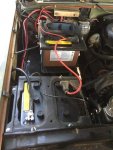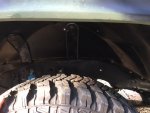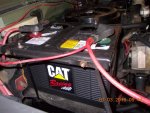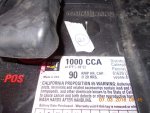I researched that backwards and forwards, I asked at the starter/alternator shop for ideas (they made my cables and sold me the batteries) and read everything I could find here. I have to agree with Doghead on this, their is a practical limit to what you can do. We can rule out a circuit breaker to the starter as the guys at the alt/starter shop explained that is not constant, the starter may only need a couple hundred amps with the engine warm, it may need 700 or more when it is cold. A fuse is also not an option for that kind of current load. What I could have done here is changed my batteries before I got to this point. The batteries were old, they passed a load test in Dec 2015, one had a 2009 date the other 2010, I didn't want to change them until everything else was done. Past experience is that letting batteries sit is a sure way to kill them and I have moments where the truck is parked for a few weeks at a time while I repair something. I also thought of adding a cut off switch to the starter hot lead, this gets really complicated, if that switch were to short to ground it would be a bad scene and kill switches for that kind of load are already pretty massive, encase it in a box or pipe to isolate everything and it gets really big, hard to mount where it is useful, etc. Using one in the ground is not an option since the truck has a 12v and 24V side and will back feed through the 12V ground if you cut the 24 and really fry some stuff. Do the Doghead mod (especially if you are using the 28MT which the Delco fact sheet I posted on another thread shows it requires a much stronger relay) take care of your batteries and wiring, replace any missing boots on terminals for the alts and other things that could get you, clean the fuse box, do the practical things. My solution to reducing this risk is I want to install a 24V solar panel system on the roof, I want something around 40W, the solargizer is too wimpy for what I want. I am looking for something that if the batteries were dead, 5-6hrs in the sun could get me up and running.






